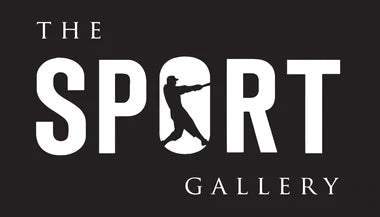As is now tradition, the Maple Leafs have turned back the clock this March and become their previous identity, the "St. Pats," for a game to celebrate Paddy's Day. Toronto's NHL franchise began life without an official name, being a temporary set-up at the time with players on loan. Fans and the press began to refer to them as the "Arenas" because of their home, the "Arena Gardens," owned by the Arena Company.
New ownership bought the team in 1919 after the Arena Company declared bankruptcy, officially making the team name the "St. Patrick's," or "St. Pats" for short. There had been amateur clubs run by the St. Pats organization in the Toronto area since the first decade of the 1900s, including the senior amateur St. Patricks team in the OHA. There was also thought that the name could generate support from Toronto's large Irish diasporic population.

It took a couple of years for the St. Pats to find success, largely because many of the franchise's original players, with Toronto only on loan, went back to their original clubs. By the 1920–21 season, improvement began to show; the club placed second and first in the separate schedule halves, enough to make a playoff appearance. Unfortunately, the dominant Ottawa Senators promptly knocked the St. Pats out. Facing the Sens' "Super Six" would, however, be helpful come the following season. Back then the Stanley Cup was not the NHL's prize, but a "challenge trophy" contested between the best teams of two leagues in Canada, in this case, the NHL and the PCHA. To get to the Stanley Cup Finals against the Vancouver Millionaires, the St. Pats exacted revenge on the Senators, winning the Game 1 of the two-game series 5-4, which, combined with a 0-0 tie for second game, gave Toronto the series win on goal differential.

The St. Pats' got their revenge on the Sens, sending them to the Stanley Cup finals against the Vancouver Millionaires, who actually had to win two series to get there, one against the 1917 Cup-winning Seattle Metropolitans, and another against the WCHL's Regina Capitals. The entire Finals was played in Toronto, and, rather fittingly, the series began on St. Patrick's Day of 1922! The St. Pats did lose that first game 4-3, but the luck of the Irish would win out in the end.

Babe Dye scored 4:50 into overtime of Game 2 to give Toronto key a 2–1 win, tying the series. In Game 3, goaltender Hugh Lehman led the Millionaires to a 3–0 shutout. However, the St. Pats tied the series again in Game 4, with a convincing 6–0 win, as John Ross Roach became the first rookie goaltender to record a Stanley Cup shutout. Game 5 belonged to Toronto as Dye scored four goals in a 5–1 victory to win the Stanley Cup. Dye, clearly the best player of the series, scored 9 out of the home team's 16 goals, while Roach averaged 1.80 goals against per game. It would be the one and only Cup win under the St. Pats moniker.
The St. Pats' ownership eventually began having their own financial difficulties. Conn Smythe bought the team in 1927, immediately changing the primary colour back to blue, in addition to renaming them the "Maple Leafs" as a show of patriotism.

